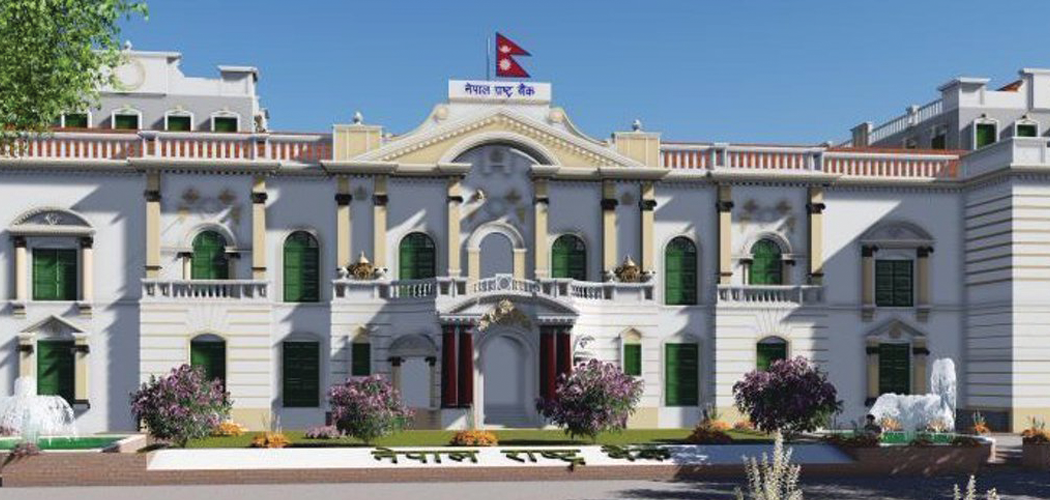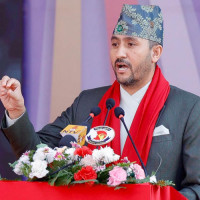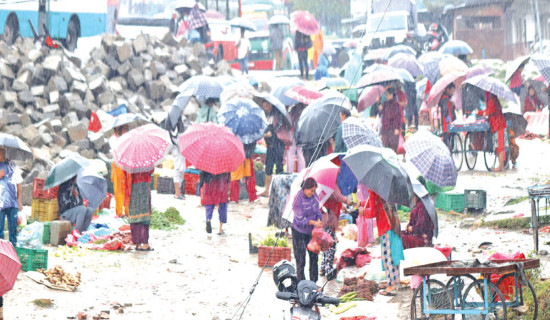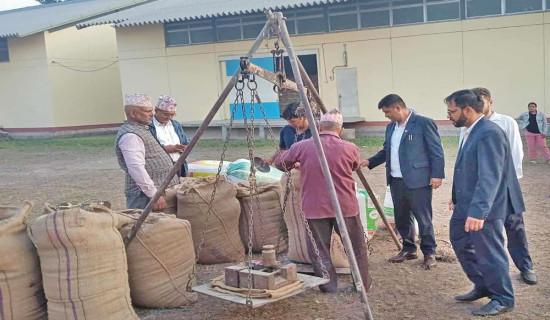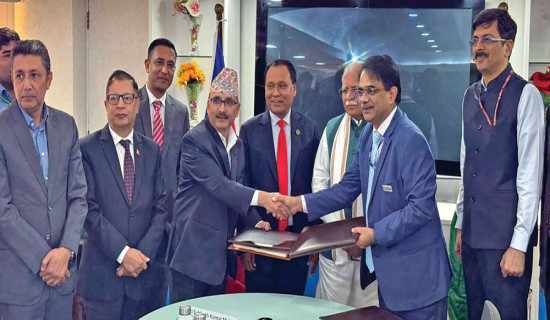- Sunday, 9 November 2025
Foreign reserves sustain steady growth
Kathmandu, Dec. 13: Nepal’s foreign currency reserves have witnessed a significant increase in the first four months of the current fiscal year.
According to the current macroeconomic and financial situation made public by the Nepal Rastra Bank (NRB) Thursday, the foreign currency reserves of the first four months of the current fiscal year can cover the import of goods and services for more than 15 months.
The steady growth in reserves has been possible as a result of multiple factors, including improved remittance inflows, controlled imports, and strategic fiscal measures implemented by the government and the central bank and tourism recovery. The foreign currency reserves reached an all-time high of Rs. 2,255.35 billion during the first four months of the current fiscal year 2024/25.
According to NRB, gross reserves of foreign exchange increased by 10.5 per cent to Rs. 2,255.35 billion in mid-November 2024 from Rs. 2,041.10 billion in mid-July 2024.
The foreign currency reserves grew by about Rs. 23.07 billion during a single month (mid-October to mid-November 2024). The foreign currency reserves amounted to Rs. 2,232.28 billion in mid-October 2024. In the US dollar terms, the gross foreign exchange reserves increased by 9.4 per cent to 16.70 billion in mid-November 2024 from 15.27 billion in mid-July 2024.
Based on the imports of four months of 2024/25, the foreign exchange reserves of the banking sector are sufficient to cover the prospective merchandise imports of 18 months, and merchandise and services imports of 15.1 months. Of the total foreign exchange reserves, reserves held by NRB increased by 8.6 per cent to Rs. 2008.15 billion in mid-November 2024 from Rs. 1848.55 billion in mid-July 2024.
Reserves held by banks and financial institutions (except NRB) increased by 28.4 per cent to Rs. 247.20 billion in mid-November 2024 from Rs. 192.55 billion in mid-July 2024.
The share of Indian currency in total reserves stood at 22 per cent in mid-November 2024, said the NRB.
Nepal receives Rs. 521 billion remittance
Nepal received remittances of Rs. 521.63 billion during the first four months of the current fiscal year 2024/25.
According to NRB, remittance inflows increased by 9.1 per cent to Rs. 521.63 billion in the review period compared to an increase of 22.5 per cent in the same period of the previous year.
In the US dollar terms, remittance inflows reached 3.87 billion in the review period which was 3.60 billion in the same period of the previous year.
Nepal received remittance of Rs. 114.32 billion in a single month (from mid-October 2024 to mid-November 2024) of the current fiscal year.
Net secondary income (net transfer) reached Rs. 568.26 billion in the review period compared to Rs. 521.43 billion in the same period of the previous year.
The number of Nepali workers, both institutional and individual, taking first-time approval for foreign employment stands at 147,478 and taking approval for renew entry stands at 94,105. In the previous year, such numbers were 137,475 and 68,841 respectively.
Current account surplus grows
Similarly, the current account remained at a surplus of Rs. 143.42 billion in the review period compared to a surplus of Rs. 97.10 billion in the same period of the previous year.
In the US dollar terms, the current account registered a surplus of 1.06 billion in the review period against a surplus of 730.58 million in the same period last year. In the review period, net capital transfer amounted to Rs. 2.47 billion.
In the same period of the previous year, such transfer amounted to Rs. 1.59 billion.
Similarly, in the review period, Rs. 5.76 billion foreign direct (Equity only) investment was received. In the same period of the previous year, such foreign direct (Equity only) investment inflows amounted to Rs. 3.65 billion.
Meanwhile, balance of payments (BOP) remained at a surplus of Rs. 205.83 billion in the review period compared to a surplus of Rs. 150.24 billion in the same period of the previous year.
In the US dollar terms, the BOP remained at a surplus of 1.53 billion in the review period compared to a surplus of 1.13 billion in the same period of the previous year.
Inflation goes up slightly
The year-on-year (y-o-y) consumer price inflation stood at 5.60 per cent in mid-November 2024 compared to 5.38 percent a year ago. According to the NRB, food and beverage inflation stood at 9.10 per cent whereas non-food and service inflation stood at 3.65 per cent in the review month. During the same period in the previous year, the price indices of these groups had increased by 5.98 per cent and 4.99 per cent respectively.
Under the food and beverage category, y-o-y price index of vegetable sub-category increased by 33.99 per cent, pulses and legumes by 10.78 per cent, cereal grains and their products by 10.15 per cent and ghee and oil by 9.29 per cent.
However, the y-o-y price index of spices sub-category decreased by 1.41 per cent, sugar and sugar products by 1.28 per cent and meat and fish by 0.02 per cent.
During the review period, y-o-y price index in rural areas and in urban areas increased by 6.19 per cent and 5.39 per cent respectively.
The y-o-y wholesale price inflation stood at 5.16 per cent in mid-November 2024 compared to 2.09 per cent a year ago.

